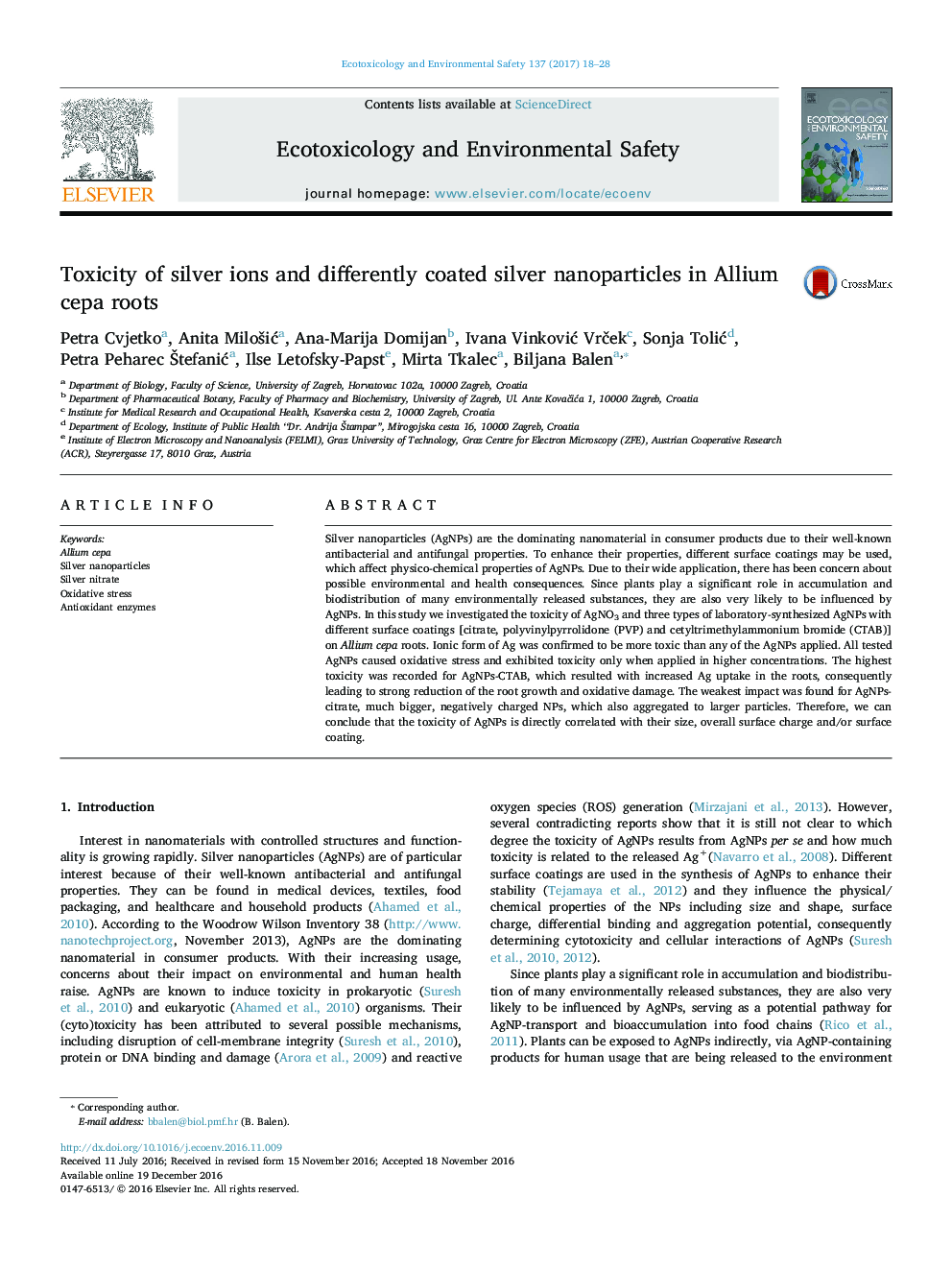| Article ID | Journal | Published Year | Pages | File Type |
|---|---|---|---|---|
| 5748046 | Ecotoxicology and Environmental Safety | 2017 | 11 Pages |
â¢Clearly different effects between AgNO3 and AgNPs treatments were obtained.â¢AgNO3 induced the highest impact in majority of the tested parameters.â¢All tested AgNPs caused oxidative stress when applied in higher concentrations.â¢Among AgNP treatments, AgNP-CTAB had the highest impact.
Silver nanoparticles (AgNPs) are the dominating nanomaterial in consumer products due to their well-known antibacterial and antifungal properties. To enhance their properties, different surface coatings may be used, which affect physico-chemical properties of AgNPs. Due to their wide application, there has been concern about possible environmental and health consequences. Since plants play a significant role in accumulation and biodistribution of many environmentally released substances, they are also very likely to be influenced by AgNPs. In this study we investigated the toxicity of AgNO3 and three types of laboratory-synthesized AgNPs with different surface coatings [citrate, polyvinylpyrrolidone (PVP) and cetyltrimethylammonium bromide (CTAB)] on Allium cepa roots. Ionic form of Ag was confirmed to be more toxic than any of the AgNPs applied. All tested AgNPs caused oxidative stress and exhibited toxicity only when applied in higher concentrations. The highest toxicity was recorded for AgNPs-CTAB, which resulted with increased Ag uptake in the roots, consequently leading to strong reduction of the root growth and oxidative damage. The weakest impact was found for AgNPs-citrate, much bigger, negatively charged NPs, which also aggregated to larger particles. Therefore, we can conclude that the toxicity of AgNPs is directly correlated with their size, overall surface charge and/or surface coating.
Graphical abstractDownload high-res image (278KB)Download full-size image
